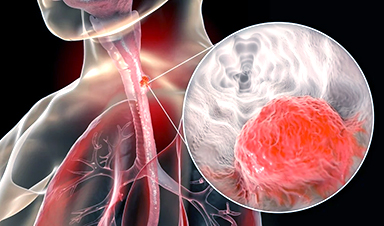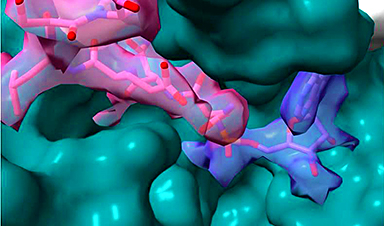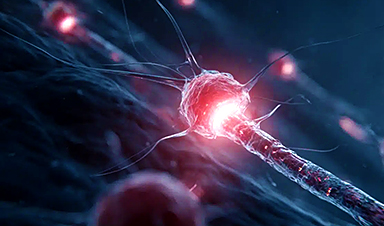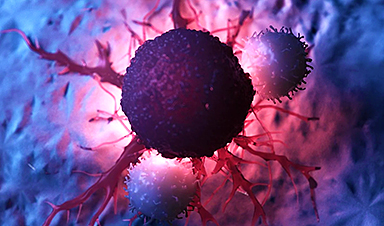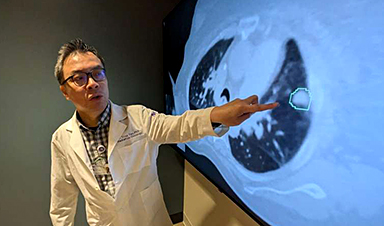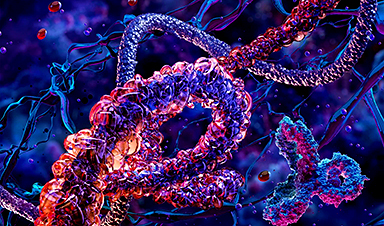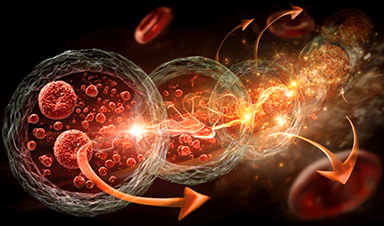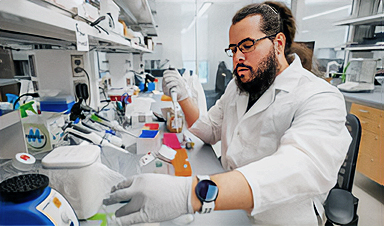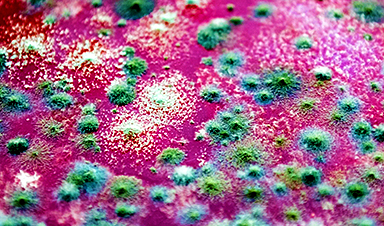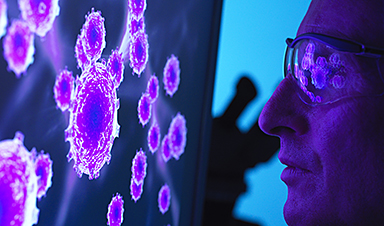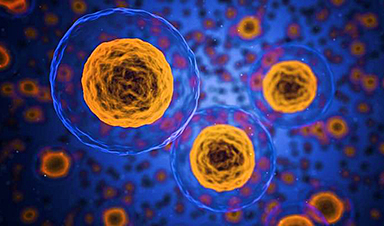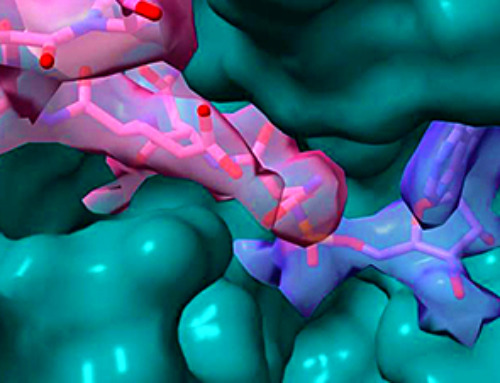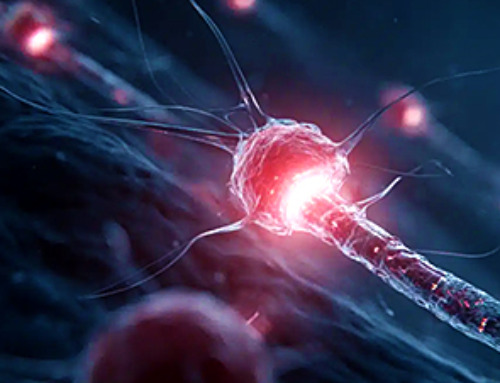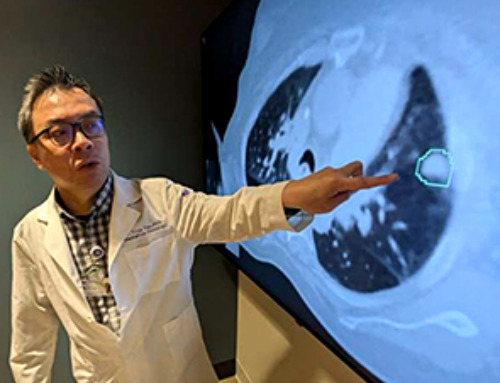Among the total number of deaths caused by different types of cancer, esophageal cancer is the sixth most significant. Several conventional treatments, such as radiotherapy, chemotherapy, and surgery have multiple side effects, including off-target toxicity and multidrug resistance (MDR).
Another strategy for esophageal cancer treatment is chemo-photodynamic therapy, the efficacy of which is limited by its inability to target tumors, lack of suitable microenvironment for photodynamic therapy (PDT), and tendency to cause adverse side effects.
Scientists sought to address these limitations of the existing therapies and developed a novel theranostic nanoplatform, namely, GCDs-Ce6/Pt-EGF, which has been found to be effective against esophageal cancer. This study has been recently published in Biomedicine & Pharmacotherapy.
Conventional Treatments of Esophageal Cancer
The majority of the available treatments for esophageal cancers come with some limitations. For instance, as this type of cancer is prone to metastasis, surgery cannot completely remove the tumor. In the case of radiotherapy, the narrow dose window limits its purpose. Low-dose radionuclides have limited tumor cell killing ability, while high dosage can affect healthy cells as well.
Although chemotherapy, using Cisplatin or Doxorubicin, can effectively eliminate tumor cells with metastasis and has a superior anti-tumor effect, it often severely damages the kidney and liver of the patient. Combinational therapy, such as chemoradiation with surgery, was effective against esophageal cancer, but this therapy showed high in-hospital mortality.
Two of the limitations associated with photothermal therapy and oxidative therapy are the recurrence of tumor cells and damage caused to off-target non-cancerous cells as well. PDT is effective against different types of cancers, such as breast, prostate, liver, and esophagus, with a better biosafety effect. However, its effectiveness is compromised by abundant glutathione (GSH) in the tumor microenvironment and hypoxia.
Nanotechnology-based Cancer Treatments
Nanoparticles are widely used in biomedical research, owing to their nanoscale dimension (1–100 nm) and multiple unique properties. Carbon nanodots are a type of carbon nanoparticle that is applied for fluorescence sensing, bioimaging, and drug delivery. The development of tumor-targeted drug delivery systems is essential to facilitate tumor-specific treatment without adversely affecting the normal cells.
Drugs are often modified to identify tumor cells by recognizing specific receptors expressed in them. In many types of cancers, including esophageal cancer, the epidermal growth factor receptor (EGFR) is found to be overexpressed. Compared to healthy individuals, esophageal cancer patients exhibit a significantly higher expression of EGFR protein in the mucosa. Hence, this receptor has been utilized as a key target for anti-tumor drug delivery.
A Novel Theranostic Nanoplatform for Esophageal Cancer Treatment
Recently, scientists have developed an all-in-one theranostic nanoplatform, known as GCDs-Ce6/Pt-EGF for esophageal cancer treatment. This nanoplatform utilized green fluorescence carbon dots (GCDs), which were synthesized using p-aminosalicylic acid and p-aminobenzamide with a molar ratio of 1:1 at 200℃ for 6 hours, via the hydrothermal method.
GCDs were characterized using atomic force microscopy (AFM) and transmission electron microscopy (TEM), which revealed a uniform dispersion of quasi-sphere GCD nanomaterials of 4.72 nm size. The fluorescence quantum yield of GCDs was estimated to be 10.62%. Most importantly, this nanoparticle exhibited excellent optical stability.
To construct the GCDs-Ce6/Pt-EGF nanoplatform, researchers grafted chlorin e6 (Ce6), which is a photosensitizer, chemotherapy agent Pt (IV), and the targeting unit epidermal growth factor (EGF) on GCDs. Here, the drug loading rates of Ce6 and Pt (IV) were estimated to be 8.53% and 19.36%, respectively. The drug loading capacity of GCDs-Ce6/Pt-EGF nanoplatform was observed to be significantly more than other nanoplatforms.
Post irradiation at 660 nm wavelength, photosensitizer Ce6 induced cell death by generating reactive oxygen species (ROS). This phenomenon induced tumor cell apoptosis. Both in vitro and in vivo studies strongly indicated that the GCDs-Ce6/Pt-EGF exhibited superior photodynamic properties and could be effectively applied for esophageal tumor imaging as well as the elimination of esophageal cancer cells (therapeutic effect).
The mechanism driving the GCDs-Ce6/Pt-EGF nanoplatform is the targeting of esophageal cancer cells, bearing EGFR, and penetration of the tumor cells. After internalization within the tumor cells, Pt(IV) gets converted to Pt(II) by intracellular GSH, which ultimately kills tumor cells.
Interestingly, this study revealed that GCDs-Ce6/Pt-EGF displayed better anti-tumor effects compared to Cisplatin. Researchers stated that this nanomedicine could not only restrict tumor cell migration but also target tumor cells by recognizing EGF receptors. Other important aspects of this theranostic nanoplatform are direct cell killing capacity by Pt(II) and laser irradiation.
The GCDs-Ce6/Pt-EGF nanoplatform displayed excellent biosafety, as it rendered negligible cytotoxicity to normal esophageal cells. This could be due to three reasons, i.e., superior tumor targeting capability that reduces off-target toxicity, the release of toxic platinum only in GSH-rich tumor microenvironment, and Ce6 induced PDT effect with laser irradiation. Scientists are optimistic that utilizing all-in-one GCDs-Ce6/Pt-EGF theranostic nanoplatform could be beneficial for treating esophageal cancer patients.
News
Team finds flawed data in recent study relevant to coronavirus antiviral development
The COVID pandemic illustrated how urgently we need antiviral medications capable of treating coronavirus infections. To aid this effort, researchers quickly homed in on part of SARS-CoV-2's molecular structure known as the NiRAN domain—an [...]
Drug-Coated Neural Implants Reduce Immune Rejection
Summary: A new study shows that coating neural prosthetic implants with the anti-inflammatory drug dexamethasone helps reduce the body’s immune response and scar tissue formation. This strategy enhances the long-term performance and stability of electrodes [...]
Scientists discover cancer-fighting bacteria that ‘soak up’ forever chemicals in the body
A family of healthy bacteria may help 'soak up' toxic forever chemicals in the body, warding off their cancerous effects. Forever chemicals, also known as PFAS (per- and polyfluoroalkyl substances), are toxic chemicals that [...]
Johns Hopkins Researchers Uncover a New Way To Kill Cancer Cells
A new study reveals that blocking ribosomal RNA production rewires cancer cell behavior and could help treat genetically unstable tumors. Researchers at the Johns Hopkins Kimmel Cancer Center and the Department of Radiation Oncology and Molecular [...]
AI matches doctors in mapping lung tumors for radiation therapy
In radiation therapy, precision can save lives. Oncologists must carefully map the size and location of a tumor before delivering high-dose radiation to destroy cancer cells while sparing healthy tissue. But this process, called [...]
Scientists Finally “See” Key Protein That Controls Inflammation
Researchers used advanced microscopy to uncover important protein structures. For the first time, two important protein structures in the human body are being visualized, thanks in part to cutting-edge technology at the University of [...]
AI tool detects 9 types of dementia from a single brain scan
Mayo Clinic researchers have developed a new artificial intelligence (AI) tool that helps clinicians identify brain activity patterns linked to nine types of dementia, including Alzheimer's disease, using a single, widely available scan—a transformative [...]
Is plastic packaging putting more than just food on your plate?
New research reveals that common food packaging and utensils can shed microscopic plastics into our food, prompting urgent calls for stricter testing and updated regulations to protect public health. Beyond microplastics: The analysis intentionally [...]
Aging Spreads Through the Bloodstream
Summary: New research reveals that aging isn’t just a local cellular process—it can spread throughout the body via the bloodstream. A redox-sensitive protein called ReHMGB1, secreted by senescent cells, was found to trigger aging features [...]
AI and nanomedicine find rare biomarkers for prostrate cancer and atherosclerosis
Imagine a stadium packed with 75,000 fans, all wearing green and white jerseys—except one person in a solid green shirt. Finding that person would be tough. That's how hard it is for scientists to [...]
Are Pesticides Breeding the Next Pandemic? Experts Warn of Fungal Superbugs
Fungicides used in agriculture have been linked to an increase in resistance to antifungal drugs in both humans and animals. Fungal infections are on the rise, and two UC Davis infectious disease experts, Dr. George Thompson [...]
Scientists Crack the 500-Million-Year-Old Code That Controls Your Immune System
A collaborative team from Penn Medicine and Penn Engineering has uncovered the mathematical principles behind a 500-million-year-old protein network that determines whether foreign materials are recognized as friend or foe. How does your body [...]
Team discovers how tiny parts of cells stay organized, new insights for blocking cancer growth
A team of international researchers led by scientists at City of Hope provides the most thorough account yet of an elusive target for cancer treatment. Published in Science Advances, the study suggests a complex signaling [...]
Nanomaterials in Ophthalmology: A Review
Eye diseases are becoming more common. In 2020, over 250 million people had mild vision problems, and 295 million experienced moderate to severe ocular conditions. In response, researchers are turning to nanotechnology and nanomaterials—tools that are transforming [...]
Natural Plant Extract Removes up to 90% of Microplastics From Water
Researchers found that natural polymers derived from okra and fenugreek are highly effective at removing microplastics from water. The same sticky substances that make okra slimy and give fenugreek its gel-like texture could help [...]
Instant coffee may damage your eyes, genetic study finds
A new genetic study shows that just one extra cup of instant coffee a day could significantly increase your risk of developing dry AMD, shedding fresh light on how our daily beverage choices may [...]
